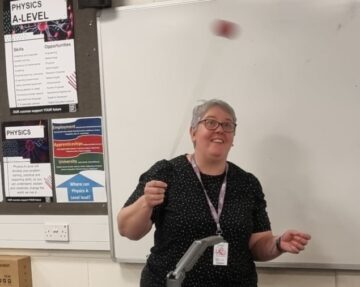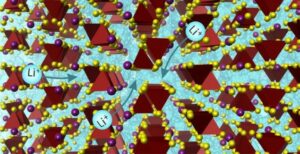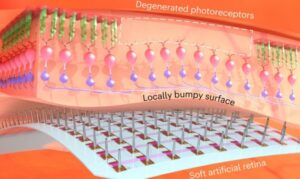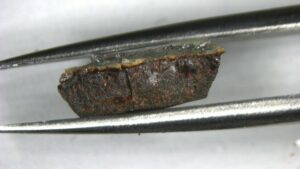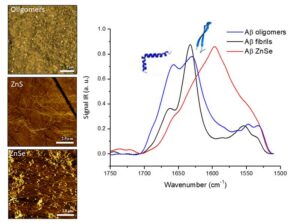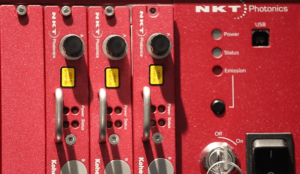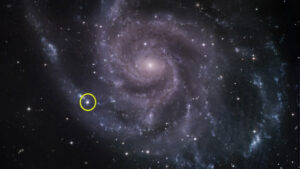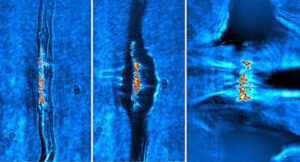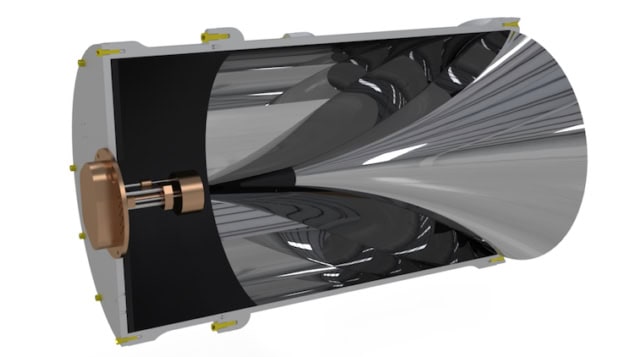
A novel detector designed to search for so-called “dark” photons has placed unprecedented constraints on where this type of dark matter might be found. The detector uses a coaxial dish antenna to trap and funnel photons, and its US-based developers say it could easily be scaled up and made more sensitive in the future.
Current theories of physics suggest that dark matter makes up roughly 85% of the universe’s mass. This form of matter may have played an important role in the formation of galaxies thanks to its gravitational pull, but we have not been able to detect it directly as yet. Indeed, scientists are not sure what form dark matter might take, or even where precisely to look for it. The main approach involves using detectors that search for particles with a specific range of masses (or frequencies) in the hopes that even if they see nothing, we will at least learn more about what dark matter is not.
Searching a broader band of masses
Kutatók által vezetett David Miller az University of Chicago és a Andrew Sonnenschein az Fermi National Accelerator Laboratory (Fermilab) have now put forward a slightly different approach involving a detector that searches over a broader range of masses, albeit with slight less precision. Known as the Broadband Reflector Experiment for Axion Detection (BREAD), this experiment looks for dark matter in the form of particles known as axions and dark photons. These particles are extremely light and can be converted into visible photons under certain circumstances. For example, when they hit a metallic wall, visible photons are emitted in a direction perpendicular to the wall.
BREAD consists of a cylindrical metal tube that traps and funnels dark photons, and the outer part of this cylindrical tube corresponds to the wall, explains team member Stefan Knirck, a physicist at Fermilab. “The photons are focused onto a small spot behind which you can place a light detector or antenna to search for a signal,” he explains. “In BREAD, the combination of an inner teardrop-shaped reflector and the outer cylinder take care of the focusing.”
Very high sensitivity in the chosen frequency range
The team describe the results from the experiment in its present form as “very promising”, noting that it shows very high sensitivity at frequencies from 10.7 to 12.5 GHz. In this range, the detector exceeds existing constraints by a factor of ~100, placing the most stringent bound yet on dark photons at these frequencies.
The UChicago/Fermilab team is now developing the technology to make it more sensitive and scalable. “At present, the experiment is sensitive to only quite contrived dark matter models,” Knirck says, “but, ultimately, the method might enable us to explore other axion models.”
To make the detector sensitive to these other axionic versions of dark matter, Knirck notes that he and his colleagues will need to add a magnetic field parallel to the wall. They plan to do this by placing the instrument in a metre-scale, high-field (multi-Tesla) solenoid magnet, and they are currently performing trials using a 4T magnet at the Argonne National Laboratory.

Dark matter vs modified gravity: which team are you on?
“We are also building more prototypes combining the concept with different cutting-edge quantum technology to be sensitive to single particles of light at the focus,” Knirck tells Fizika Világa. “At Fermilab we soon expect to receive an even more powerful magnet which will make our experiments much more sensitive. The long-term goal is a large-scale experimental program with a setup on the 10-metre scale inside a huge magnet.”
A tanulmány közzétételre került Fizikai áttekintés betűk.
- SEO által támogatott tartalom és PR terjesztés. Erősödjön még ma.
- PlatoData.Network Vertical Generative Ai. Erősítse meg magát. Hozzáférés itt.
- PlatoAiStream. Web3 Intelligence. Felerősített tudás. Hozzáférés itt.
- PlatoESG. Carbon, CleanTech, Energia, Környezet, Nap, Hulladékgazdálkodás. Hozzáférés itt.
- PlatoHealth. Biotechnológiai és klinikai vizsgálatok intelligencia. Hozzáférés itt.
- Forrás: https://physicsworld.com/a/bread-experiment-tracks-dark-photons-to-new-levels/
- :van
- :is
- :nem
- :ahol
- $ UP
- 10
- 12
- 160
- 7
- a
- Képes
- Rólunk
- gázpedál
- hozzá
- Is
- an
- és a
- megközelítés
- VANNAK
- Diffraktáltuk
- AS
- At
- ZENEKAR
- BE
- óta
- mögött
- Túl
- Köteles
- Kenyér
- tágabb
- Épület
- de
- by
- TUD
- ami
- bizonyos
- választott
- körülmények
- Fürt
- együttműködés
- munkatársai
- kombináció
- kombinálása
- kompakt
- koncepció
- áll
- korlátok
- átalakított
- Mag
- megfelel
- tudott
- Jelenleg
- élvonalbeli
- sötét
- Sötét anyag
- leírni
- Design
- tervezett
- kimutatására
- Érzékelés
- fejlesztők
- fejlesztése
- különböző
- irány
- közvetlenül
- tál
- terjesztés
- do
- könnyen
- lehetővé
- elég
- Még
- példa
- meghaladja
- létező
- vár
- kísérlet
- kísérleti
- kísérletek
- Elmagyarázza
- feltárása
- rendkívüli módon
- tényező
- mező
- megfelelő
- Összpontosít
- összpontosított
- összpontosítás
- A
- forma
- képződés
- Előre
- talált
- Frekvencia
- ból ből
- jövő
- Galaxies
- galaktika
- GAS
- cél
- gravitációs
- gravitációs
- Legyen
- he
- Magas
- övé
- Találat
- reméli,
- FORRÓ
- HTTPS
- hatalmas
- if
- kép
- fontos
- in
- valóban
- információ
- belső
- belső
- műszer
- bele
- jár
- bevonásával
- kérdés
- IT
- ITS
- jpg
- ismert
- laboratórium
- nagyarányú
- TANUL
- legkevésbé
- Led
- balra
- kevesebb
- szintek
- fény
- található
- hosszú lejáratú
- néz
- MEGJELENÉS
- készült
- Május
- Mágneses mező
- Fő
- csinál
- KÉSZÍT
- Tömeg
- tömegek
- Anyag
- max-width
- Lehet..
- tag
- egyesülő
- fém
- módszer
- esetleg
- modellek
- módosított
- több
- a legtöbb
- MRI
- sok
- nemzeti
- Szükség
- Új
- Megjegyzések
- semmi
- megjegyezve,
- regény
- Most
- of
- on
- csak
- -ra
- or
- Más
- mi
- felett
- Párhuzamos
- rész
- előadó
- Fotonok
- fizikus
- Fizika
- Fizika Világa
- Hely
- forgalomba
- terv
- Plató
- Platón adatintelligencia
- PlatoData
- játszott
- pont
- potenciális
- erős
- pontosan
- Pontosság
- be
- Program
- prototípusok
- közzétett
- tesz
- Kvantum
- kvantumtechnika
- egészen
- hatótávolság
- kap
- vakolás
- Eredmények
- Kritika
- Szerep
- nagyjából
- azt mondják
- azt mondja,
- skálázható
- Skála
- pikkelyes
- tudósok
- Keresés
- keresések
- lát
- érzékeny
- Érzékenység
- felépítés
- mutató
- Műsorok
- Jel
- jelek
- egyetlen
- kicsit más
- kicsi
- nemsokára
- különleges
- Spot
- szigorú
- struktúra
- Tanulmány
- javasol
- biztos
- Vesz
- csapat
- Technológia
- megmondja
- Kösz
- hogy
- A
- A jövő
- Ezek
- ők
- ezt
- miniatűr
- nak nek
- pályák
- csapdák
- vizsgálatok
- igaz
- típus
- Végül
- alatt
- példátlan
- us
- használ
- segítségével
- verzió
- nagyon
- látható
- vs
- Fal
- we
- Mit
- amikor
- ami
- lesz
- val vel
- világ
- még
- te
- zephyrnet

